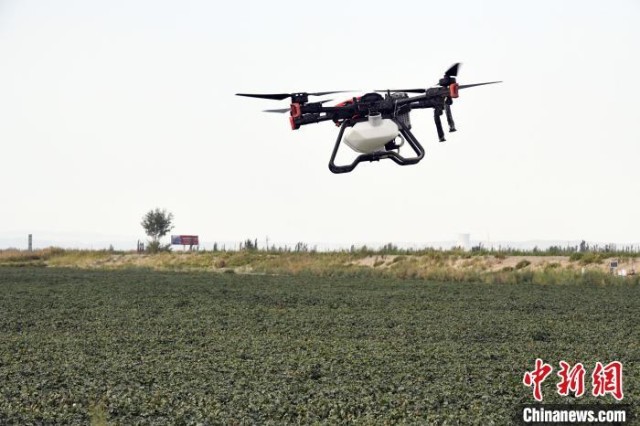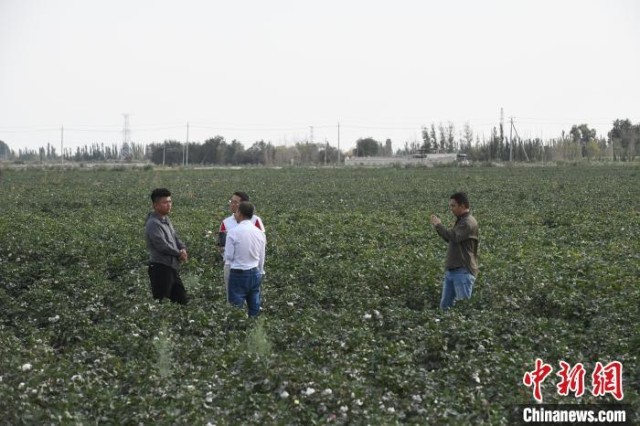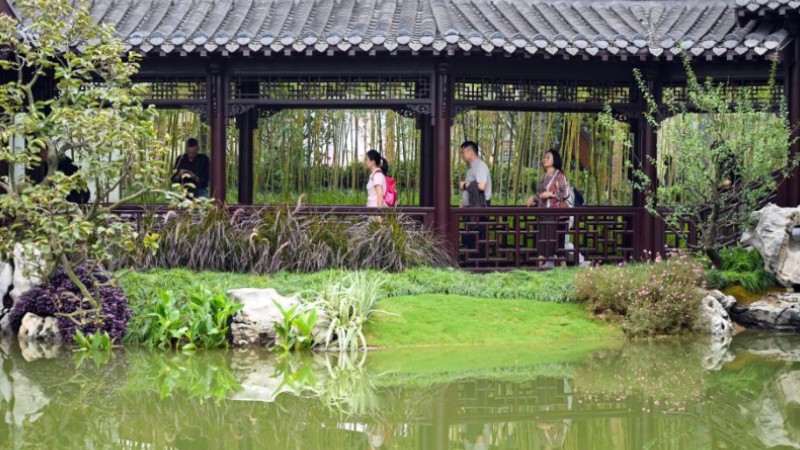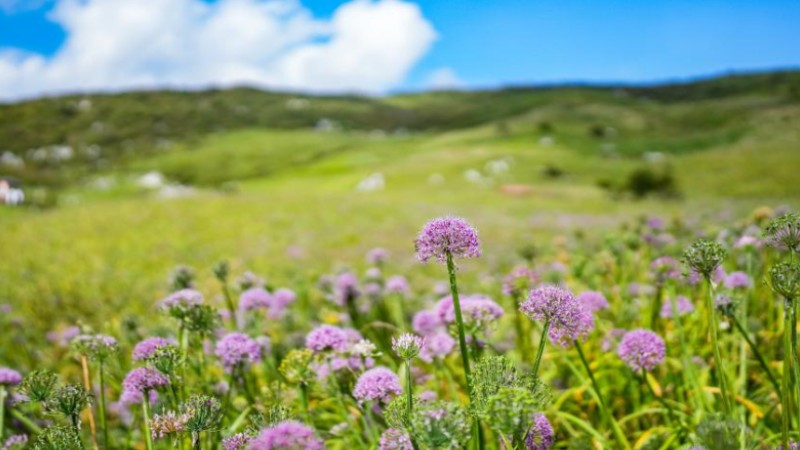Cotton farming becomes smarter, more efficient in NW China's Xinjiang
Cotton farming is becoming smarter and more efficient in the Xinjiang Uygur Autonomous Region. Ai Haipeng, born in 1990, serves as one of the managers of a remarkable "super cotton farm," covering 3,000 mu (equivalent to 200 hectares), in Yuli county, within Bayingolin Mongolian Autonomous Prefecture.
Working alongside Ai is another manager, Ling Lei, born in 1992. Their management of the cotton farm has garnered admiration among local cotton farmers.
The cotton cultivation project commenced in April 2021, with Ai and Ling being solely responsible for the entire process, from sowing to harvesting.

Workers operate a drone to spray pesticides on a cotton field in Yuli county, Bayingolin Mongolian Autonomous Prefecture, northwest China's Xinjiang Uygur Autonomous Region. (China News Service/Sun Tingwen)
Bayingolin Mongolian Autonomous Prefecture serves as a crucial production base for high-quality cotton in Xinjiang. Income from cotton contributes to over 60 percent of the per capita net income of farmers in Yuli.
This year, the cotton planting area in the prefecture totals approximately 3.2 million mu, with Yuli accounting for 1 million mu.
The "super cotton farm" has achieved integrated water and fertilizer management by utilizing drones, unmanned agricultural vehicles, remote sensing drones, agricultural self-driving devices, Internet of Things (IoT) devices, and smart agriculture-related system platforms.
"Compared to traditional agriculture, our daily cotton field management does not require manual labor, and 80 percent of the tasks, such as irrigation, fertilization, weeding, and spraying, are carried out by robots," Ai said.

Staff members explain the process of managing cotton using a smart agriculture system. (China News Service/Sun Tingwen)
Ai and his team have developed various types of robots, with the aim of establishing a smart farm management system.
"The use of robots allows us to save on labor, time, and financial costs. The precise data provided by these robots enables us to more scientifically monitor the growth environment of cotton and manage the fields," Ai added.
In 2022, the cotton farm achieved significant cost reductions compared to traditional methods. Labor costs decreased by over 175 yuan ($24) per mu, and expenses for seeds, water, pesticides, fertilizers, and other production materials decreased by over 410 yuan per mu.
These cost reductions were made possible by investing less than 170 yuan per mu in intelligent equipment transformation and maintenance. Furthermore, ongoing improvements and optimizations in basic equipment and planting methods will lead to further reductions in investment costs in the future.
Ai stated that the farm's successful practices have drawn the attention of many local cotton farmers. Currently, 2,500 mu of cotton fields have been designated experimental fields, and all of them have experienced remarkable profitability.
According to Ai, the "super farm" system has a low operational threshold, making it accessible for anyone to use. The goal is to encourage the adoption of this system in more than 1 million mu of cotton fields next year.
To ensure continuous improvement and meet user needs, approximately 200 members of the farm's R&D team, which consists of nearly 600 people, conduct regular research visits to the fields and their surrounding farms. This allows them to gain a better understanding of user needs and improve services.
Currently, out of the 3.2 million mu of cotton fields in the prefecture, 801,000 mu have been developed into high-standard farmland.
Photos
Related Stories
Copyright © 2023 People's Daily Online. All Rights Reserved.









